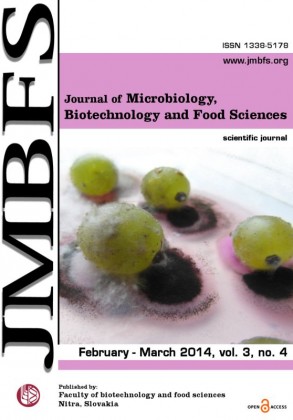DETECTION OF UV-B-INDUCED THYMINE DIMER IN A CYANOBACTERIUM, SCYTONEMA SP.
Keywords:
DNA, UV-B, cyclobutane-pyrimidine dimmerAbstract
DNA molecule is one of the major targets for UVR that can alter its molecular structure by forming different types of lesions leading to chronic mutagenic and even death of the cell. In comparison to UV-B, the wavelength of UV-A has poor efficiency in inducing the DNA damage; because they are not absorbed by native DNA. Before assessing the impact of UV-B radiation on DNA, we observed its effects on growth and survival of the test organism Scytonema sp. It was observed that growth and survival were severely affected by UV-B radiation for different durations. UV-B treatment causes loss in the cooperative binding property of DNA which is evident from the failure of complementary strands of DNA.Downloads
Download data is not yet available.
Downloads
Published
2014-02-01
How to Cite
Kumar, P. (2014). DETECTION OF UV-B-INDUCED THYMINE DIMER IN A CYANOBACTERIUM, SCYTONEMA SP. Journal of Microbiology, Biotechnology and Food Sciences, 3(4), 299–304. Retrieved from https://office2.jmbfs.org/index.php/JMBFS/article/view/7018
Issue
Section
Microbiology
License
Copyright (c) 2014 Pavan Kumar

This work is licensed under a Creative Commons Attribution 4.0 International License.
All papers published in the Journal of Microbiology, Biotechnology and Food Sciences are published under a CC-BY licence (CC-BY 4.0). Published materials can be shared (copy and redistribute the material in any medium or format) and adapted (remix, transform, and build upon the material for any purpose, even commercially) with specifying the author(s).

